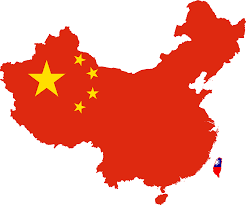On Tuesday, Chinese stocks saw a modest increase, aligning with regional markets ahead of anticipated comments from Federal Reserve officials later in the day. Global investors are keenly watching for insights from various Federal Reserve speakers regarding the future trajectory of the U.S. central bank’s interest rate policies, following last week’s decision to maintain the current rates.
Recent data indicated that China’s industrial output for May did not meet expectations, with the property sector remaining weak. This underperformance is adding pressure on Beijing to introduce policy measures to support economic growth. However, retail sales surpassed forecasts, bolstered by a holiday boost. According to analysts at Gavekal Dragonomics, China’s economic growth is unlikely to see substantial improvement in the coming months. Although the situation is not weak enough to prompt immediate government intervention, market participants are once again left waiting for additional policy support.
At the close of the trading day, the Shanghai Composite index rose by 0.48% to 3,030.25. The blue-chip CSI300 index saw a 0.27% increase. Within this index, the financial sector sub-index was up by 0.32%, while the consumer staples sector fell by 1.33%, the real estate index dropped by 1.23%, and the healthcare sub-index decreased by 0.98%.
In contrast, the Hang Seng index in Hong Kong fell by 20.57 points, or 0.11%, ending at 17,915.55. The Hang Seng China Enterprises index declined by 0.08% to 6,368.1. Among the sub-indices of the Hang Seng, the energy shares rose by 0.3%, the IT sector dipped by 0.66%, the financial sector saw a 0.37% increase, and the property sector dropped by 0.98%.
The smaller Shenzhen index ended the day up by 0.71%, and the start-up board ChiNext Composite index increased by 0.286%. Regionally, MSCI’s Asia ex-Japan stock index improved by 0.61%, while Japan’s Nikkei index closed up by 1%.
Fidelity China Special Situations PLC (LON:FCSS), the UK’s largest China Investment Trust, capitalises on Fidelity’s extensive, locally-based analyst team to find attractive opportunities in a market too big to ignore.

